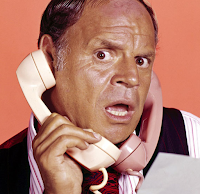Houses of the Holy
Written and Drawn by Caitlin Skaalrud
Published by Uncivilized Books
Caitlin Skaalrud’s Houses of the Holy is a perplexing comic. The poetic tale of a woman journeying through a biographical landscape desires your interpretation of its dreamlike images and cryptic prose. The book begins by revealing secret, underground rooms, twelve in total, even though Skaalrud waits until after the 12th to reveal the 10th room. These rooms serve as an overture to the rest of the book. Fittingly, this first movement of Houses of the Holy was published a year or two ago as a minicomic that reveals the metered nature of Skaalrud’s drawing and writing. Now expanded, the mysteries of the 12 rooms functions as a gateway into the mysteries of a woman’s journey across a dream-like countryside.
Skaalrud’s cartooning is full of puzzles. Each drawing is a stunning and complete work of art but they are full of these elements that don’t make sense on their own. The spaces she draws are as much mysteries as they are clues to the overall narrative of the entire book. The haunting images are so unnatural even as they contain elements of nature. Dead or dying animals are juxtaposed against houses and buildings filled with the artifacts of a life. For the most part, it’s a decaying world in Skaalrud’s pages, a world that barely makes sense as it falls into ruins. Her artwork is brimming with incongruous images that are disconcerting but mesmerizing. The imagination or desperation that visually goes into these images desires interpretation, if not resolution.
And that’s what the woman in this comic seems to want as well. As your read Skaalrud’s drawings, you can start to piece together the connections and themes that are running through the book. Skaalrud has a story that she wants to tell without actually telling it. There’s no “once upon a time…” in Houses of the Holy because Skaalrud knows that there’s rarely a “once upon a time…” in life. Skaalrud’s images may seem random and disconnected on a first read, but she’s not trying to make this simple for you. It couldn’t have been simple or easy for her to tell this story so why should it be for you to read it?
The poetic nature of the comic makes Houses of the Holy a rather unique reading experience. The poetry of the prose reflects and complements the poetry of the images. While all the elements are powerful on their own, just reading the artwork or allowing the prose to build these mysteries forms an incomplete view of the verses and movements of Houses of the Holy. The complete experience calls for wrestling with both word and image as Skaalund weaves to two together, creating dreams and nightmares simultaneously.
Within these glimpses of the artifacts of a lifetime, Skaalrud forms a vision of this woman’s life and the pain that has been left behind in it. This is the poetry of personal journey that is revealed to us through verse, image, and metaphor. It almost seems like the ideal way to view Skaalrud’s book would be in a gallery, with all of the pages on display for you to join in the journey with the woman. Walking through this narrative, viewing each page as a separate yet connected part of a whole would modify the experience of this book as if you were on the journey with the woman. Having this as a book brings it into a more personal journey though as it becomes a series of small little discoveries, parts that build into a revealing whole.










